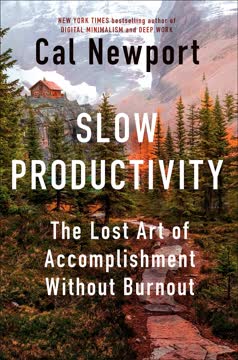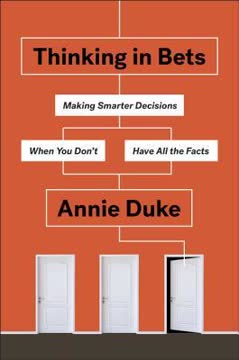Key Takeaways
1. Complexity is an opportunity, complicatedness is the real enemy
The real curse is not complexity so much as "complicatedness," by which we mean the proliferation of cumbersome organizational mechanisms—structures, procedures, rules, and roles—that companies put in place in an effort to deal with the mounting complexity of modern business.
Complexity vs. complicatedness. Business complexity arises from increasing performance requirements companies must meet. This complexity brings challenges but also opportunities for competitive advantage. Complicatedness, on the other hand, refers to the organizational structures and processes companies create to deal with complexity. This complicatedness destroys a company's ability to leverage complexity and get things done.
The complicatedness trap. Over the past 15 years, the number of procedures, layers, and coordination bodies in companies has increased by 6.7% annually, leading to:
- 40-60% of managers' time spent in coordination meetings
- 40-80% of team time wasted on non-value-adding activities
- 3x higher likelihood of employee disengagement
Root causes. Complicatedness stems from two outdated management approaches:
- The "hard" approach: Relying on structures, processes, and systems to control behavior
- The "soft" approach: Focusing on interpersonal relationships and emotional factors
2. Understand what people actually do, not what they should do
To understand organizational performance, managers must trace that performance back to what people do and the way their behaviors combine with each other to produce overall results.
Analyze the work context. To understand why people behave as they do, examine their:
- Goals: What they're trying to achieve
- Resources: What they use to solve problems
- Constraints: What hinders or restricts them
Look for anomalies. Pay attention to unexpected behaviors or situations that don't fit your assumptions. These often reveal key insights about the work context and how people actually operate.
Avoid common pitfalls:
- Don't focus on what people fail to do, but on what they actually do
- Don't assume organizational elements (structures, processes) have a direct effect on behavior
- Don't rely on psychological explanations or stereotypes to explain behavior
3. Empower integrators to foster cooperation
When you create power, there has to be enough of it to be used. If the power falls short of this threshold, it is not a resource; it is a constraint.
Integrators vs. coordinators. Integrators are individuals or units that foster cooperation for the company's benefit. Unlike traditional coordinators, integrators:
- Are not dedicated roles, but part of existing jobs
- Are directly involved in cooperation, not just reviewing afterward
- Cannot be ignored due to their power and influence
Identify potential integrators. Look for:
- Those expressing high dissatisfaction (often at nexus of constraints)
- Those resented by others (often have power but use it selfishly)
Reinforce integrators by:
- Removing useless managerial positions
- Minimizing rules that hem in managers
- Relying on judgment over metrics for evaluating cooperation
4. Increase total power in the organization
Power is the possibility for one person to make a difference on issues—or stakes—that matter to someone else.
Understanding power. Power is not about position, authority, or personal traits. It comes from the ability to influence issues that matter to others and control relevant uncertainties.
Create new power bases. Increase the total quantity of power by:
- Adding new stakes that matter to people
- Ensuring stakes relate to company performance requirements
- Giving people influence over issues important to others
Benefits of increasing power:
- Enables more people to take risks and cooperate
- Enhances strategic agility and adaptiveness
- Improves organizational design by balancing power across functions
5. Create reciprocity through rich objectives
Rich objectives stimulate the mutual interest to cooperate by making each person's success depend on the success of others.
Components of rich objectives:
- Collective output objectives: Ultimate value delivered, dependent on multiple people
- Individual input objectives: Personal contributions not dependent on others
- Overlap objectives: Actions that increase others' effectiveness
Reinforce rich objectives by:
- Eliminating internal monopolies
- Reducing resources that fuel self-sufficiency
- Creating multiple networks of interaction (multiplexity)
Benefits of reciprocity:
- Increases accountability without adding complicatedness
- Fosters cooperation without relying on formal structures
- Enables decentralized, flexible control
6. Extend the shadow of the future
By extending the shadow of the future, we make the more-or-less distant horizon—that point at which our present behavior will eventually reveal its consequences—much more important and evident to us now.
Four ways to extend the shadow:
- Tighten feedback loops: Increase frequency of interactions and result reviews
- Bring the end point forward: Shorten project durations
- Tie futures together: Link individual success to others' success
- Make people walk in the shoes they make for others: Expose people to consequences of their actions
Avoid strategic alignment trap. The standard practice of strategic alignment often leads to:
- A mechanistic approach that creates a "stupid machine" organization
- A linear sequence that ties the organization into knots
- Bad strategies driven by fragmented views of the competitive landscape
Benefits of extending the future shadow:
- Increases engagement by making personal impact more evident
- Fosters innovation and risk-taking balanced with cooperation
- Improves decision-making by considering long-term consequences
7. Reward cooperation, not just individual performance
Blame is not for failure, it is for failing to help or ask for help.
Change evaluation criteria. Focus on:
- Organizational criteria (cooperation) rather than just technical criteria
- Rewarding those who help others or ask for help
- Making transparency about problems a resource, not a constraint
Transform the managerial dialogue. Ask:
- What will you do to improve performance?
- What personal risks are you taking?
- How can I help you get cooperation from others?
Benefits of rewarding cooperation:
- Increases transparency about weaknesses and improvement opportunities
- Fosters a culture of mutual support and collective problem-solving
- Balances risk-taking with organizational resilience
8. Abandon outdated management approaches for smart simplicity
Simplifying in a naive way—by ignoring or discarding business complexity—is a dead end. You have to be smart and play on people's smartness.
Smart simplicity approach:
- Use pain points to discover interdependencies and cooperation needs
- Uncover obstacles to cooperation by analyzing behavior and context
- Change the context using the six simple rules
- Raise ambitions based on new cooperation possibilities
Benefits of smart simplicity:
- Addresses real issues faster and more effectively
- Depersonalizes problems, reducing resistance to change
- Builds buy-in through collaborative problem-solving
Practical implementation:
- Focus on changing aspects like budgeting, objective setting, career paths, and decision rights
- Use classical organizational building blocks, but only those necessary to deal with complexity
- Maintain an authentic management presence, connecting to the reality of work rather than abstractions
Last updated:
FAQ
What's "Six Simple Rules: How to Manage Complexity without Getting Complicated" about?
- Overview of the book: The book, authored by Yves Morieux and Peter Tollman, explores how organizations can manage increasing complexity without becoming overly complicated. It introduces six simple rules to help managers foster cooperation and autonomy within their teams.
- Purpose of the book: The authors aim to provide a framework for organizations to create value and achieve competitive advantage by leveraging complexity rather than being overwhelmed by it.
- Focus on simplicity: The book emphasizes the importance of simplifying management practices to enhance productivity and employee engagement, moving away from traditional hard and soft management approaches.
Why should I read "Six Simple Rules: How to Manage Complexity without Getting Complicated"?
- Practical solutions: The book offers actionable strategies for managers to address complexity in their organizations, making it a valuable resource for leaders seeking to improve performance.
- Innovative approach: It challenges conventional management wisdom, providing fresh insights into how organizations can thrive in a complex business environment.
- Real-world examples: The authors use case studies from various industries to illustrate the application of the six simple rules, making the concepts relatable and easy to understand.
What are the key takeaways of "Six Simple Rules: How to Manage Complexity without Getting Complicated"?
- Six simple rules: The book outlines six rules that help manage complexity: understanding what people do, reinforcing integrators, increasing the total quantity of power, increasing reciprocity, extending the shadow of the future, and rewarding those who cooperate.
- Focus on cooperation: The rules emphasize the importance of fostering cooperation and autonomy among employees to improve organizational performance.
- Avoiding complicatedness: The authors argue that traditional management practices often lead to unnecessary complexity, and the book provides strategies to simplify processes and enhance productivity.
What are the six simple rules introduced by Yves Morieux and Peter Tollman?
- Understand what your people do: This rule emphasizes the importance of managers truly understanding the actions and motivations of their employees to improve performance.
- Reinforce integrators: It involves empowering individuals or units that can foster cooperation across the organization, replacing complicated structures with effective collaboration.
- Increase the total quantity of power: The authors suggest creating new sources of power within the organization to encourage cooperation and address complexity.
How does "Six Simple Rules" define and address organizational complicatedness?
- Definition of complicatedness: Complicatedness refers to the proliferation of cumbersome organizational mechanisms—structures, procedures, rules, and roles—that hinder a company's ability to leverage complexity for competitive advantage.
- Impact on performance: The book argues that complicatedness destroys productivity and employee engagement, leading to stagnant performance and dissatisfaction.
- Solution through simplicity: By applying the six simple rules, organizations can eliminate complicatedness, improve performance, and enhance employee satisfaction.
What is the "smart simplicity" approach in "Six Simple Rules"?
- Concept of smart simplicity: Smart simplicity is the approach introduced by the authors to manage complexity by leveraging people's intelligence and judgment rather than relying on rigid structures and processes.
- Combination of autonomy and cooperation: The approach emphasizes the need for both autonomy and cooperation among employees to effectively handle complex challenges.
- Practical application: The six simple rules provide a framework for implementing smart simplicity in organizations, leading to improved performance and engagement.
How do Yves Morieux and Peter Tollman suggest increasing reciprocity in organizations?
- Rich objectives: The authors propose designing rich objectives that include collective output objectives, individual input objectives, and overlap objectives to increase reciprocity.
- Eliminate internal monopolies: By making roles contestable and substitutable, organizations can break down monopolies that hinder cooperation.
- Reduce resources: Limiting resources can compel individuals to cooperate, as they become more interdependent and reliant on each other to achieve goals.
What role does power play in "Six Simple Rules," and how can it be increased?
- Understanding power: Power is defined as the ability to make a difference on issues that matter to others, and it is crucial for fostering cooperation in complex environments.
- Creating new power sources: The authors suggest creating new stakes that matter to individuals and relate to organizational performance to increase the total quantity of power.
- Positive-sum game: By increasing power, organizations can encourage more cooperation and innovation, leading to better performance and adaptability.
How does "Six Simple Rules" address the concept of strategic alignment?
- Critique of strategic alignment: The book argues that traditional strategic alignment often leads to complicatedness, as it adds layers of structure and processes that hinder performance.
- Alternative approach: Instead of aligning structures and processes, the authors recommend using feedback loops to connect actions with their consequences, fostering cooperation and adaptability.
- Avoiding the alignment trap: By focusing on cooperation and direct feedback, organizations can avoid the pitfalls of strategic alignment and improve overall performance.
What are some real-world examples used in "Six Simple Rules" to illustrate the application of the rules?
- InterLodge case study: The book describes how a hotel chain improved performance by empowering receptionists to influence back-office functions, leading to better cooperation and customer satisfaction.
- MobiliTele example: A telecom manufacturer reduced product development delays by turning a powerful unit into an integrator, fostering cooperation among engineering teams.
- RapidTrain story: A railway company improved on-time performance by changing evaluation criteria to reward cooperation, leading to better collaboration among operational units.
What are the best quotes from "Six Simple Rules" and what do they mean?
- "The real curse is not complexity so much as 'complicatedness.'" This quote highlights the book's central argument that unnecessary organizational mechanisms hinder performance more than complexity itself.
- "Cooperation has nothing to do with a touchy-feely conviviality." The authors emphasize that genuine cooperation involves addressing interdependencies and adjustment costs, rather than relying on good interpersonal relationships.
- "The simple rules are a way for managers to break out of this doom loop." This quote underscores the book's promise that the six simple rules can help organizations escape the cycle of complicatedness and improve performance.
How can managers implement the six simple rules in their organizations?
- Start with understanding: Managers should begin by understanding what their people do and why, using this knowledge to inform changes in the work context.
- Empower integrators: Identify and empower individuals or units that can foster cooperation across the organization, replacing complicated structures with effective collaboration.
- Create feedback loops: Use direct and indirect feedback loops to connect actions with their consequences, encouraging cooperation and adaptability in addressing complex challenges.
Review Summary
Six Simple Rules receives mixed reviews, with an average rating of 3.93/5. Positive reviews praise its insightful management theory, emphasizing simplicity and cooperation. Critics find the language overcomplicated and some ideas derivative. Many readers appreciate the practical examples and thought-provoking concepts, particularly the focus on understanding employees' work context and encouraging cooperation. Some reviewers feel the book could have been condensed into an article, while others consider it a must-read for managers. The six rules are generally seen as useful, though their implementation may require organizational change.
Similar Books










Download PDF
Download EPUB
.epub digital book format is ideal for reading ebooks on phones, tablets, and e-readers.




